What is Carrier Aggregation in 4G/5G Networks?
Carrier aggregation is a technique used in 4G (LTE) and 5G networks to enhance data rates and improve network performance by combining multiple frequency bands or carriers. The idea behind carrier aggregation is to use multiple radio frequency channels simultaneously to increase the overall bandwidth available for data transmission.
In traditional cellular networks, a device communicates with the network using a single frequency band at a time. With carrier aggregation, a device can connect to and use multiple frequency bands simultaneously, which can significantly increase data speeds and network capacity.
Advantages of Carrier Aggregation in 4G and 5G Networks:
- Increased Data Speeds: Carrier aggregation allows the simultaneous use of multiple frequency bands, leading to higher data speeds and improved network performance.
- Enhanced Network Capacity: By combining multiple carriers, carrier aggregation increases the overall capacity of the network, accommodating more users and devices.
- Improved Spectral Efficiency: Carrier aggregation improves the spectral efficiency of the network, enabling more efficient use of available frequency bands and spectrum resources.
- Better User Experience: Users experience faster download and upload speeds, reduced latency, and smoother connectivity, resulting in an overall improved mobile experience.
- Optimized Resource Utilization: Carrier aggregation optimizes the utilization of available spectrum resources, making the network more efficient and capable of handling higher data demands.
- Efficient Handling of Peak Traffic: During peak usage times, carrier aggregation helps distribute the traffic across multiple carriers, preventing network congestion and ensuring a consistent user experience.
- Future-Proofing for Evolving Technologies: Carrier aggregation is crucial for the evolution of mobile networks, providing a foundation for technologies like LTE Advanced and 5G.
- Flexibility in Network Configuration: Network operators can dynamically configure carrier aggregation based on network conditions, allowing for adaptability to varying demand and usage patterns.
Disadvantages of Carrier Aggregation in 4G and 5G Networks:
- Complex Network Infrastructure: Implementing carrier aggregation requires a more complex network infrastructure, including compatible base stations and mobile devices.
- Increased Device Complexity: Devices that support carrier aggregation may be more complex and may require additional components, potentially impacting device cost and design.
- Potential for Higher Power Consumption: Utilizing multiple carriers simultaneously can lead to increased power consumption in mobile devices, affecting battery life to some extent.
- Network Interference: In densely populated areas, interference between carriers may occur, potentially affecting the quality of service and network performance.
- Backward Compatibility Challenges: Not all devices and network components may support carrier aggregation, leading to challenges in ensuring backward compatibility with older devices.
- Deployment Costs: Upgrading network infrastructure to support carrier aggregation can be costly for mobile operators, especially in areas with existing equipment that may need modification or replacement.
- Interoperability Issues: Ensuring seamless interoperability between different frequency bands and carriers can be challenging and may require careful planning and coordination.
- Spectrum Fragmentation: Carrier aggregation may result in the fragmentation of available spectrum, making it more challenging to allocate and manage frequency bands effectively.
- Complex Handover Procedures: The handover process between different carriers in carrier aggregation scenarios can be complex, potentially impacting the user experience during transitions.
- Limited Impact on Indoor Coverage: Carrier aggregation may have a limited impact on indoor coverage, especially in buildings with poor signal penetration, requiring additional solutions like indoor small cells.
Features of Carrier Aggregation in 4G and 5G Networks:
- Higher Data Speeds:
- 4G: Carrier aggregation in 4G allows for combining multiple carriers, resulting in increased data speeds for users.
- 5G: The feature continues in 5G, offering even higher data rates by combining different frequency bands simultaneously.
- Increased Network Capacity:
- 4G: Carrier aggregation enhances network capacity in 4G by utilizing multiple carriers, accommodating more users and devices.
- 5G: This capability is further advanced in 5G, supporting many devices and ensuring efficient data handling.
- Support for Multiple Frequency Bands:
- 4G: Carrier aggregation in 4G supports combining carriers from different frequency bands, optimizing spectrum utilization.
- 5G: The feature persists in 5G, enabling aggregation across a broader range of frequency bands to meet diverse connectivity needs.
- Enhanced Spectral Efficiency:
- 4G: Carrier aggregation improves spectral efficiency in 4G by utilizing the available spectrum more effectively.
- 5G: The spectral efficiency gains are extended in 5G, allowing for more efficient data transfer and utilization of spectrum resources.
- . Improved User Experience:
- 4G: Users experience improved download and upload speeds, reduced latency, and better overall network performance.
- 5G: The user experience is further enhanced in 5G with lower latency and significantly faster data rates.
- . Dynamic Configuration:
- 4G: Network operators can dynamically configure carrier aggregation in response to changing network conditions and demand.
- 5G: Dynamic configuration capabilities are advanced in 5G, allowing for more flexible adaptation to varying usage patterns.
- Efficient Handling of Peak Traffic:
- 4G: Carrier aggregation helps distribute traffic during peak usage, preventing network congestion and maintaining service quality.
- 5G: This is crucial in 5G to handle massive device connectivity and data demands during peak times effectively.
- Compatibility with Evolving Technologies:
- 4G: Carrier aggregation lays the groundwork for the evolution of 4G networks towards advanced technologies.
- 5G: The feature seamlessly integrates into the 5G architecture, supporting the evolution of mobile networks.
- Support for Multiple Input, Multiple Output (MIMO):
- 4G: Carrier aggregation often works in conjunction with MIMO to enhance signal quality and network performance.
- 5G: MIMO capabilities are further expanded in 5G, supporting advanced antenna configurations for improved communication.
- Inter-Band and Intra-Band Aggregation:
- 4G: Carrier aggregation includes both inter-band (across different frequency bands) and intra-band (within the same frequency band) aggregation.
- 5G: Similar aggregation types are maintained in 5G, offering flexibility in combining carriers for optimal performance.
- Increased System Capacity:
- 4G: Carrier aggregation increases the overall system capacity of 4G networks, accommodating a higher number of simultaneous connections.
- 5G: This capacity enhancement is critical in 5G, supporting the massive device connectivity and diverse services of the fifth-generation network.
- . Seamless Handover Between Carriers:
- 4G: Carrier aggregation ensures smooth handover procedures between different carriers, maintaining connectivity during transitions.
- 5G: Enhanced handover mechanisms in 5G contribute to a seamless user experience, even in dynamic network conditions.
Importance of Carrier Aggregation in 4G and 5G Networks:
- Increased Data Speeds:
- 4G: Carrier aggregation significantly enhances data speeds, allowing users to experience faster download and upload rates.
- 5G: The importance persists in 5G, contributing to even higher data speeds and ultra-fast connectivity.
- . Enhanced Network Capacity:
- 4G: Carrier aggregation boosts network capacity by combining multiple carriers, accommodating more users and devices simultaneously.
- 5G: The importance is amplified in 5G, addressing the increased demand for connectivity in the era of the Internet of Things (IoT) and diverse applications.
- Optimized Spectrum Utilization:
- 4G: Carrier aggregation optimizes the use of available frequency bands, making efficient use of the spectrum.
- 5G: In 5G, the optimization of spectrum resources becomes crucial as networks leverage a broader range of frequency bands.
- Efficient Handling of Peak Traffic:
- 4G: Carrier aggregation prevents network congestion during peak usage times, ensuring a consistent and reliable user experience.
- 5G: Handling peak traffic efficiently is paramount in 5G, where the network must support massive device connectivity and varied data demands.
- Improved Spectral Efficiency:
- 4G: Spectral efficiency is improved, allowing for better use of available spectrum resources.
- 5G: Spectral efficiency gains are extended in 5G, ensuring the efficient utilization of frequency bands for enhanced data transfer.
- Better User Experience:
- 4G: Users benefit from improved download and upload speeds, reduced latency, and a more seamless mobile experience.
- 5G: The user experience is further elevated in 5G, with lower latency and significantly faster data rates for real-time applications.
- Dynamic Configuration for Network Adaptability:
- 4G: Carrier aggregation allows dynamic configuration, enabling network operators to adapt to changing conditions and demands.
- 5G: Dynamic configuration capabilities become even more critical in 5G, supporting the diverse requirements of evolving applications and services.
- Future-Proofing for Evolving Technologies:
- 4G: Carrier aggregation lays the foundation for the evolution of 4G networks towards advanced technologies.
- 5G: The feature seamlessly integrates into the 5G architecture, contributing to mobile networks’ continuous evolution and adaptability.
- Support for Massive Device Connectivity:
- 4G: Carrier aggregation supports increased device connectivity, accommodating a higher number of simultaneous connections.
- 5G: Handling massive device connectivity is crucial in 5G, where a multitude of IoT devices and diverse services rely on seamless connectivity.
- Seamless Handover Between Carriers:
- 4G: Carrier aggregation ensures smooth handover procedures between different carriers, maintaining connectivity during transitions.
- 5G: Enhanced handover mechanisms in 5G contribute to a seamless user experience, even in dynamic network conditions.
- Addressing Diverse Frequency Bands:
- 4G: Carrier aggregation enables the combination of carriers from different frequency bands, optimizing network performance.
- 5G: The importance extends in 5G, where a wider range of frequency bands is utilized, requiring efficient aggregation for optimal performance.
Another Important Questions in Carrier Aggregation in 4G and 5G Networks:
1. What is carrier aggregation in 4G and 5G networks?
- Answer: Carrier aggregation is a technology that enables mobile devices to use multiple frequency bands simultaneously, boosting data speeds and overall network performance in both 4G and 5G networks.
2. What is 4G plus carrier aggregation?
- Answer: 4G plus carrier aggregation refers to the enhanced 4G LTE network achieved by combining multiple frequency bands, allowing for increased data throughput and improved network efficiency.
3. What is carrier aggregation in Jio?
- Answer: In Jio’s network, carrier aggregation involves combining multiple frequency bands to enhance data speeds and network capacity, providing users with a faster and more efficient mobile experience.
4. What are the different types of carrier aggregation?
- Answer: Types of carrier aggregation include intra-band, inter-band, and contiguous or non-contiguous aggregation, each involving combining different frequency bands to enhance network performance.
5. Why use carrier aggregation?
- Answer: Carrier aggregation is employed to increase data speeds, improve network efficiency, and enhance overall performance by utilizing multiple frequency bands simultaneously.
6. What are the benefits of carrier aggregation?
- Answer: Benefits include higher data speeds, improved network capacity, reduced latency, and an enhanced overall mobile user experience.
7. What is 4G carrier aggregation speed?
- Answer: The speed achieved with 4G carrier aggregation varies, but it can significantly exceed standard 4G speeds, providing faster data transfer rates.
8. What are the carrier aggregation settings?
- Answer: Carrier aggregation settings can be found in mobile device network settings, allowing users to check if their device is utilizing carrier aggregation and the specific frequency bands in use.
9. What is the maximum carrier aggregation in 5G?
- Answer: The maximum carrier aggregation in 5G can involve combining multiple frequency bands, significantly boosting data speeds and network efficiency.
10. Does Jio support 5G carrier aggregation?
- Answer: Jio’s support for 5G carrier aggregation will depend on its network infrastructure, but carriers typically aim to implement such technologies for enhanced performance.
11. Does Airtel have carrier aggregation?
- Answer: Yes, Airtel, like other major carriers, implements carrier aggregation technology to enhance network performance and provide faster data speeds.
12. What is carrier aggregation in WIFI?
- Answer: Carrier aggregation in Wi-Fi involves combining multiple channels to increase data throughput, similar to the concept in mobile networks.
13. What is 3-carrier aggregation?
- Answer: 3-carrier aggregation involves combining three different frequency bands to further enhance data speeds and network efficiency.
14. What are the four types of carriers?
- Answer: The four types of carriers in the context of carrier aggregation are primary, secondary, anchor, and supplementary carriers, each serving a specific role in the aggregation process.
15. What are the two types of carriers?
- Answer: The two main types of carriers are primary and secondary carriers, with the primary carrier being the main channel for communication.
16. What is LTE’s full form?
- Answer: LTE stands for Long-Term Evolution, which is a standard for wireless broadband communication, including mobile networks.
17. How many carrier aggregations are there?
- Answer: The number of carrier aggregations depends on the specific technology and implementation, with multiple aggregations available to enhance network performance.
18. How do you use carrier aggregation?
- Answer: Carrier aggregation is typically automatic in supported devices; users don’t need to manually enable it. The device and network negotiate to utilize multiple frequency bands for improved performance.
19. Does carrier aggregation improve call quality?
- Answer: While carrier aggregation primarily enhances data speeds, it can indirectly contribute to improved call quality by optimizing overall network performance.
20. What is the speed of 5G?
- Answer: 5G speeds vary but can reach significantly higher data rates compared to 4G, potentially reaching gigabit speeds under optimal conditions.
21. What is the maximum speed of 4G?
- Answer: 4G speeds can reach up to several hundred megabits per second, depending on network conditions and carrier capabilities.
22. What is the maximum carrier aggregation in LTE?
- Answer: LTE supports various configurations, and the maximum carrier aggregation depends on the specific LTE Advanced or LTE Advanced Pro technology being used.
23. How do I enable carrier aggregation?
- Answer: Carrier aggregation is usually automatic on supported devices. Users don’t typically need to manually enable it; the device and network manage the aggregation process.
24. Does carrier aggregation use more battery?
- Answer: While carrier aggregation may slightly increase power consumption, modern devices and networks are optimized to manage battery life effectively.
25. What are the disadvantages of carrier aggregation?
- Answer: Disadvantages may include increased device complexity, potential for higher power consumption, and the need for compatible network infrastructure.
26. Is carrier aggregation good or bad?
- Answer: Carrier aggregation is generally beneficial, providing higher data speeds and improved network performance. However, the impact on battery life and device complexity should be considered.
27. What are the categories of LTE carrier aggregation?
- Answer: LTE carrier aggregation is categorized into intra-band, inter-band, and contiguous or non-contiguous aggregation, each offering different advantages.
28. What is the difference between carrier aggregation and MIMO?
- Answer: Carrier aggregation combines multiple frequency bands for higher data speeds, while MIMO (Multiple Input, Multiple Output) uses multiple antennas to improve signal quality and capacity.
29. What is dual carrier aggregation?
- Answer: Dual carrier aggregation involves combining two frequency bands to enhance data speeds and network performance.
30. What is the difference between carrier aggregation and dual connectivity?
- Answer: Carrier aggregation combines multiple bands for higher data speeds, while dual connectivity involves connecting to two different base stations simultaneously for improved network efficiency.
31. What is the MIMO type?
- Answer: MIMO type refers to the specific configuration of antennas used in a MIMO system, such as 2×2 MIMO or 4×4 MIMO, indicating the number of transmit and receive antennas.
32. Why is MIMO used in 4G?
- Answer: MIMO is used in 4G to improve data rates, enhance signal quality, and increase network capacity by employing multiple antennas for simultaneous data transmission and reception.
33. Is MIMO 4G or 5G?
- Answer: MIMO is used in both 4G and 5G networks to improve signal quality and increase data throughput.
34. Does MIMO increase bandwidth?
- Answer: Yes, MIMO can increase effective bandwidth by utilizing multiple antennas for parallel data transmission and reception.
35. Why is MIMO used in 5G?
- Answer: MIMO is used in 5G to achieve higher data rates, improve spectral efficiency, and enhance overall network
Read More- 4G vs 5G Smartphone and Compromises

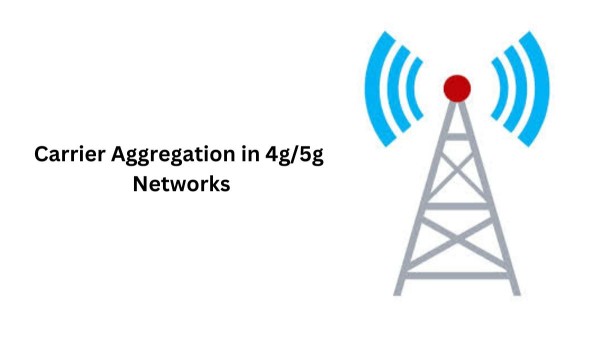
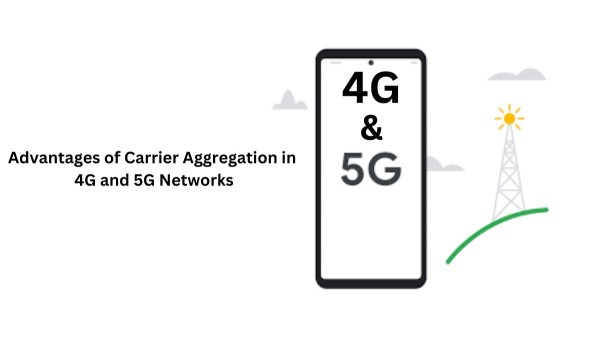
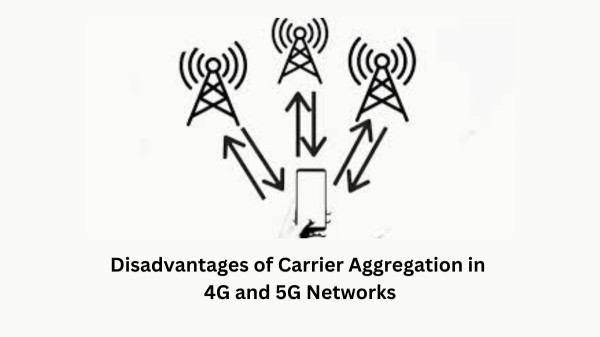
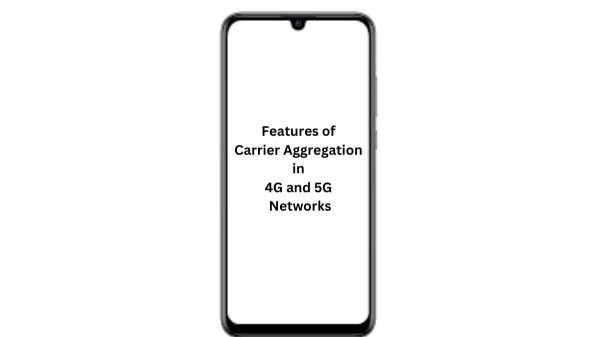
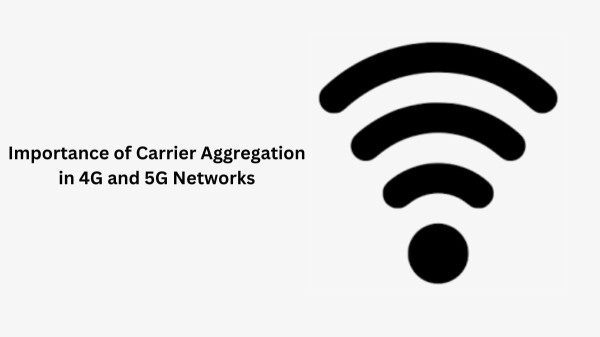
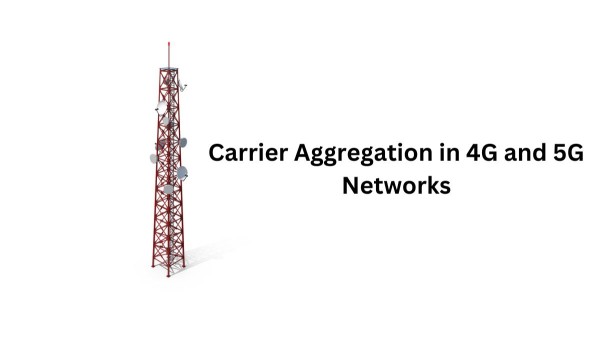
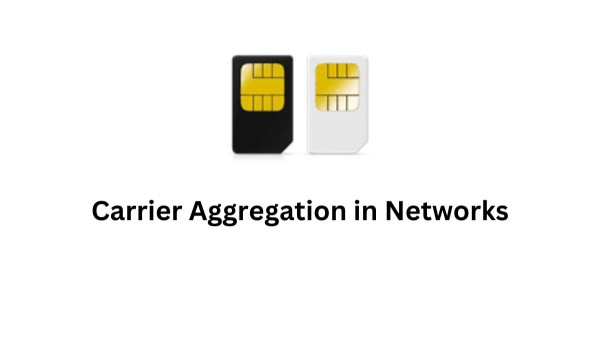
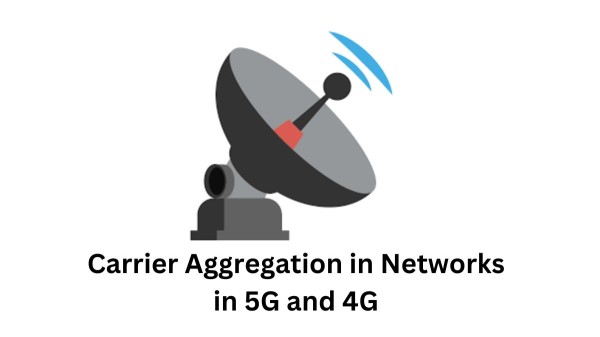
1 thought on “4G and 5G Networks on Carrier Aggregation”